Their agile and forward-thinking design and management team has over 110 years of combined experience in the audio, electrical, and aerospace engineering fields.
Their products offer superior value products and great , might I say absurd prices. The Caldera 10 subwoofer and Scout monitors are their first 2 products. The Scout monitor, at $299.00 a pair, is a superb value. It is a real rosewood 2 way monitor with 5.25" woofer and soft dome tweeter. Initial press and customer feedback has been exceptional. There is also a new Virtual Black Hole isolation device that is a steal at only $199.00 for a 4 unit set. Great for speakers, amps, preamp or DAC's. A 12" 600 watt Rosewood Caldera sub is now shipping at only $399.00. These will be followed by a 40wpc Pure Class A power amplifier and stereo preamplifier. See the renderings of the amp and preamp below. XSA products come with a 30 day trial with 20% restocking fee.Series One A40- 40wpc pure Class A power amplifier
$1,995.00
Due out in late December 2024
Pre-order now at the 1599.00 intro deal. Call with $100.00 deposit to reserve one
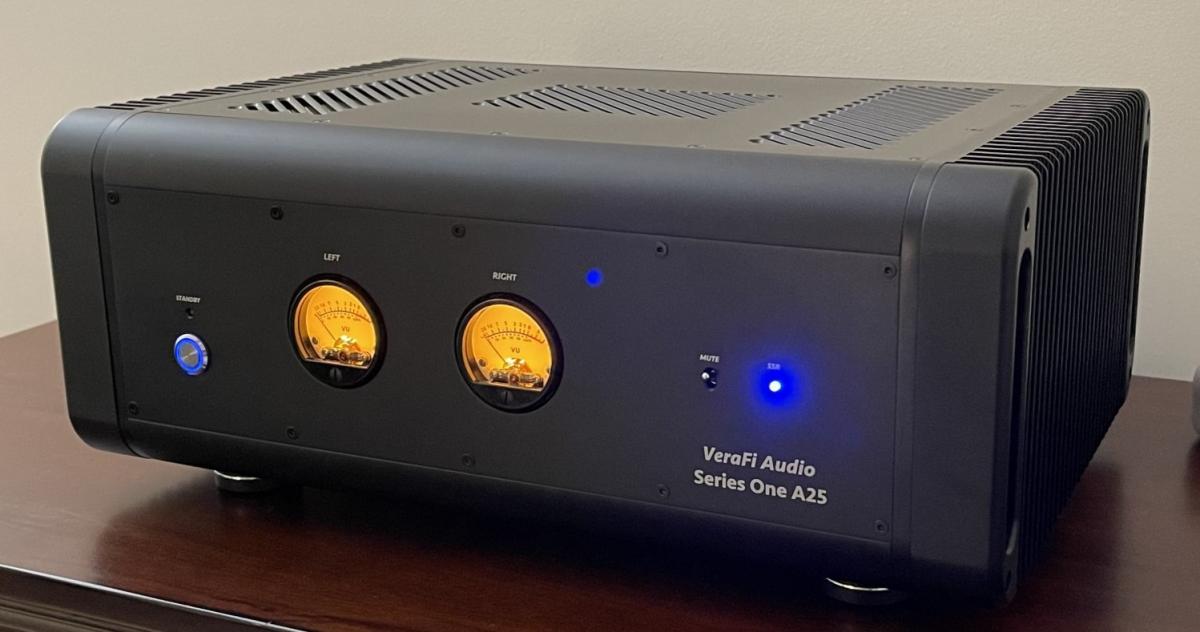
Series One A40 with 40 watts per channel
The first review out and they say:
"In conclusion, the A40 is an excellent anchor for a sub-$20k hifi system without having to go used or DIY. While you can’t bridge them (again, there goes the magic), using a pair of these in a vertical biamp type system could be incredibly good for those craving more dynamic headroom."
"The A40 delivers so much performance for the money the only reasonable comparison I could come up with was the PrimaLuna EVO 100. At about $2,600, this 38 wpc tube amp is equally robust but very different. Of course, the tube amp has even more tonal saturation, especially the midrange – but the tubes don’t control the bottom end as succinctly as the A40 does. Highs are different in presentation, with the A40 being more resolving and the EVO 100 being more silky smooth."
"These two power amplifiers represent the best values going in a low powered tube or solid-state amplifier period, end of story. Some of you will have to have tubes, while others will insist on solid-state. If you’re on the fence, I suggest the A40 because you’ll never have to replace tubes."
See the entire review here: https://www.tonepublications.com/review/the-vera-fi-a40-power-amplifier-worlds-1st-review/
A chassis CNC machined from thick aerospace grade aluminum and finished in a satin and luxuriously rich anodized texture. Large heat-sink radiator fins and hidden handles in the corner structures provide clean lines but maintain practicality. Large analog VU meters provide information on amplifier power and operation at a glance.
The heart of the amplifier is a 40W true Class A amp (never operates outside of Class A) designed by Hugh Dean of Aspen Amplifier, PLC (Melbourne). It is based on the Alpha Nirvana amp topology, which provides a beautiful harmonic profile, clean and clear sound with low distortion, slamming bass from low negative feedback circuit, and a background that is absolutely quiet and noise free for the blackest of black notes. Most of all though, the Alpha Nirvana topology makes your toes want to tap, and your heart race, and your brain feel like it has fallen in love with your music collection all over again.
3 Year warranty
Vanguard Caldera 12" subwoofer
Intro price $399.00 + $40.00 flat rate economy freight to the lower 48 states.
Now shipping
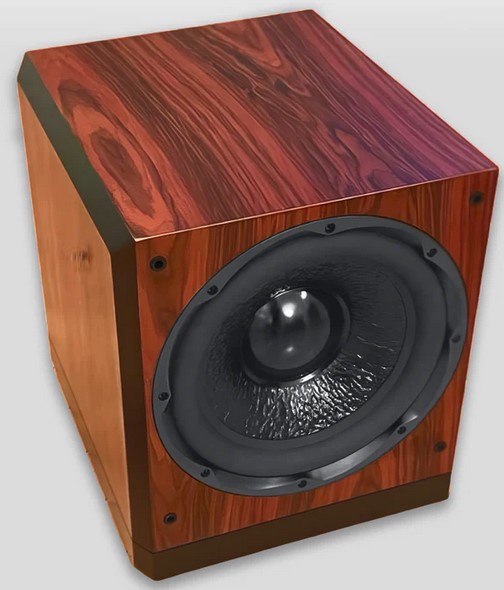
The big brother to the Caldera 10 this new 500 watt 12" woofer is a monster at only $399.00. Two will rock your world
See the great parttimeaudiophile.com review here: https://pt.audio/2025/07/25/vera-fi-vanguard-caldera-12-subwoofer-review/
They gave it a Reviewers Choice award and summed with:
"With smaller speakers such as the Alexandria Audio The Monitor and the Acora Acoustics MRB-1, the Caldera simply committed no wrong. I consistently felt that the Vera-Fi Vanguard Caldera 12 added something to the sound that did make everything much better to my ears. Then again, if you want to add a $400 subwoofer to a pair of $30,000 speakers such as the Carmels, you probably need the guidance of a trustworthy and knowledgeable dealer."
"If you have a more modest system, for which the Vera-Fi Vanguard Caldera 12 is obviously designed, I think this subwoofer can perform miracles. It’s easy to blend into your system, and it’s easy to place in your room, and you’ll have access to low frequency performance that will significantly increase your enjoyment with what you already have. I really wished the Caldera 12 had been around during my younger days–it would have been the ideal solution for extraordinary sound. Highly recommended."
See the great Tone Audio review at: https://www.tonepublications.com/review/the-vera-fi-caldera-12-subwoofer/
"If you are a music lover seeking to reproduce that lower register in a way that your main speakers just can’t, the Caldera 12 subs will make a fantastic addition to your system and musical enjoyment. Once you have them (and I suggest a pair, if you can), you’ll never go back to not having a great subwoofer in your system."
"For those who can step up to the new Caldera 12 sub, or perhaps even a pair—you won't believe your ears! And for the ultimate in low bass perfection, a quad of Vera-Fi subs will give you everything, and at a price point that typically might have gotten you only a single sub with high-end pretentions."
Read the superb new review here:https://positive-feedback.com/reviews/hardware-reviews/vera-fi-audio-vanguard-caldera-12-subwoofer/
Super Sub with 500 Watts + Real Rosewood w/ Black Edgework + Plenty of Control for Real World Use by Real AV Lovers
The Caldera 12 sub near field measurement (mic at vent exit plane and 10mm from cone) shows a -3dB F3 of 22.5Hz.
This 12" is great for both music and movies
The amp shown below uses a large analog power supply with Class D output

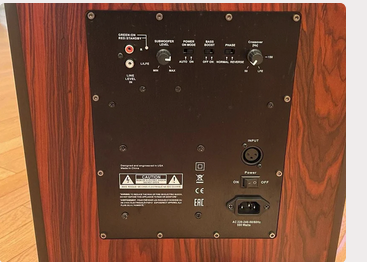
Vanguard Caldera 10" subwoofer
Intro price $199.00 + $35.00 flat rate freight to the lower 48 states.
Now shipping
Going to $249.00
Two subs are amazing at only $398.00.
AMAZING PERFORMANCE SUB
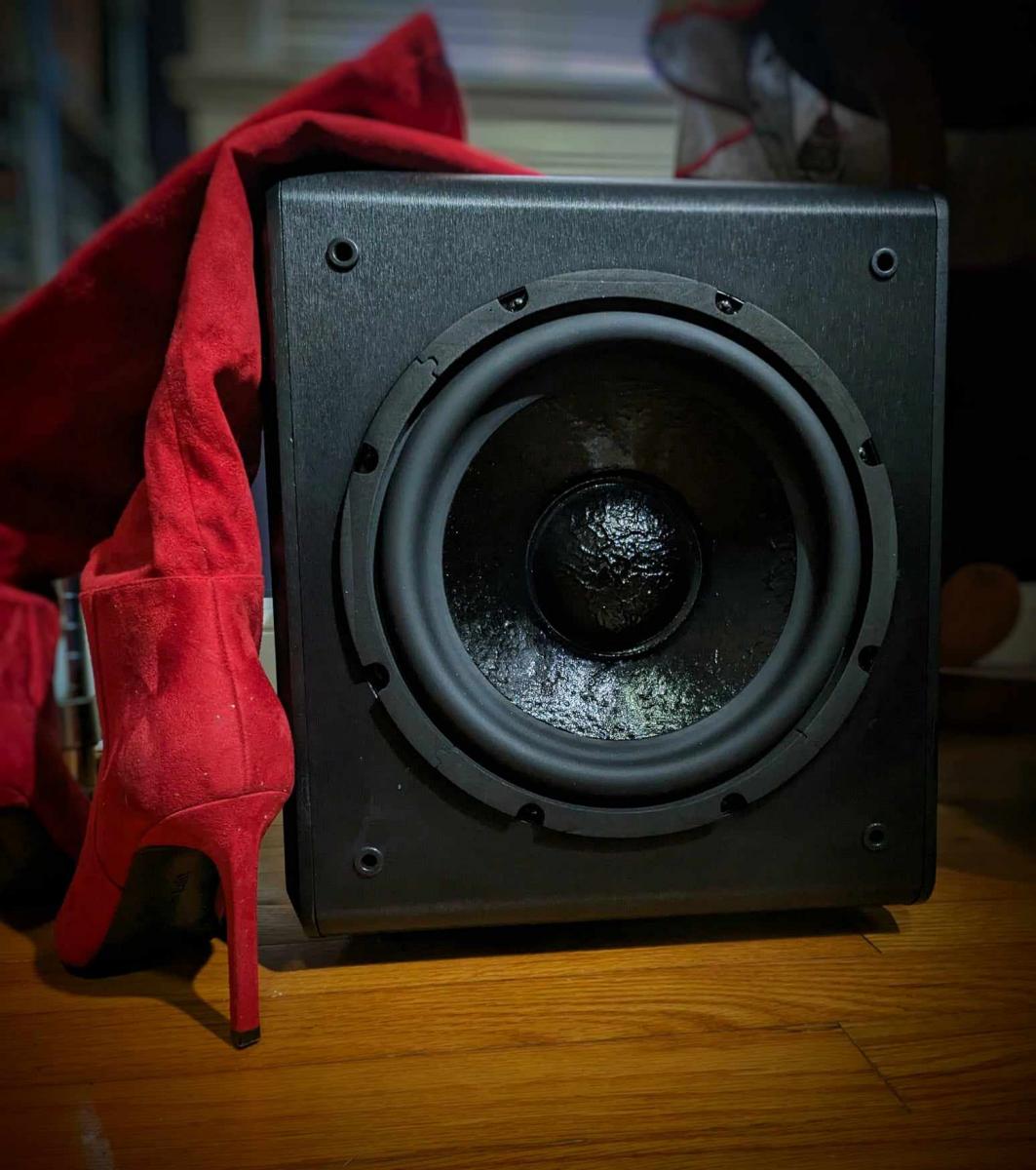
And
another great video review by Zero Fidelity here: https://www.youtube.com/watch?v=nOH-RaGSQdI
See the latest great Youtube review here: https://www.youtube.com/watch?v=-naGVAy94kQ
Stereotimes said:
"The Caldera 10 played well with all three speaker models. This sub is quite musical, far from a boom-boom box; it renders with a musical heart. If I have my way, the Vanguard Caldera 10″ Power Active Compact Subwoofer stays put. Please give it a listen!"
Read the entire review here: http://www.stereotimes.com/post/vanguard-caldera-10-power-active-compact-subwoofer-v5-by-greg-voth/
The new review said:
I have owned many subwoofers over the years, my first, back in the ‘80s, was a two-foot cube with a 12” driver and a 200W amplifier with a fixed crossover which I sold, well used for $200, and my last commercially made sub was a Genesis that sold for about $3,000, my current subwoofer is a free-air sub similar to the Celestion 6000 of the late ‘80s ($3,300pr) using the LSA Discovery Warp 1 as an amplifier and 50Hz low pass filters (this works well enough for my speakers that I designed it for, but not at all for the Vanguard Loudspeakers or any speaker of significant efficiency). I won’t say that the Caldera 10 is the best subwoofer I have heard, but it is without question the best value in a subwoofer, and it competes favorably with the subwoofers listed here, being both incredibly fast, with exceptional punch, and still has the power to shake a room. To put it in perspective, the equivalent SVS sub is $900.
Ironically, the Caldera 10 actually increased the soundstage, giving the deep resonance that accompanies a massive hall.
I cannot recommend the Veri-Fi Audio LLC Vanguard Caldera 10 Active Subwoofer enough, buy one, for $200 it is a no brainer, in fact, buy two, or if you want to use them for home theatre buy four, no $800 subwoofer will come close.
https://headphone.guru/veri-fi-audio-llc-vanguard-caldera-10-active-subwoofer-seismic-fun/?bclid=IwAR3oC8zziJD_wDgaA6z_VJUpPorJ_c0FFK-uQswTrlzcDzdiCMa-gcqcX-Y
Here is the first review from Tom Gibbs, Positive Feedback:
"The Good: Seriously? Re-read this review! They say there's no free lunch in high-end audio, but with the Vanguard Caldera, you get an appetizer, lunch, dessert, and a craft beer. All for $199—it doesn't get any better!"
"How is it that Mark Schifter and Vera-Fi are able to manufacture and sell the Vanguard Caldera for $199? I'm beyond baffled, as the sub it's replacing (yes—it's definitely a keeper!) sold new 12 years ago for $1k, and would probably sell for close to twice that today. I'm blown away—yet again—by another of Mark's products: both Mark and his collaborator Viet Nguyen are definitely on their A-game. Well done! The Vanguard Caldera subwoofer comes very highly recommended!"
35 pounds
16" H x 13" W x 15" D
Class A/B amp rated to output 200 watts into 4 ohms
-3 dB down point at 30Hz and a -6 dB downpoint at 27Hz;
More Specs coming shortly

Scout speakers
$299.00 a pair + $26.00 flat rate freight in the lower 48 states
Shipping Now
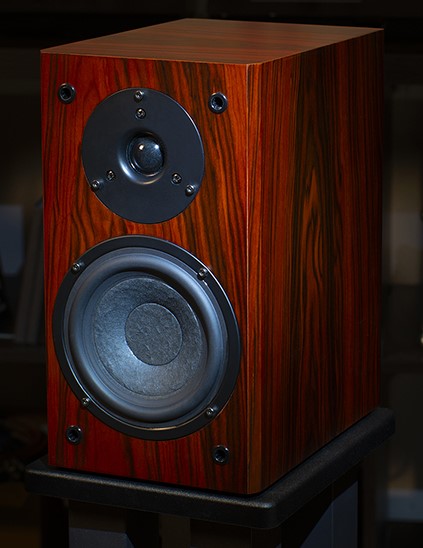
The Scout uses a 5.25" paper cone woofer with a 1" soft dome tweeter. The crossover is exceptional for a speaker on this price range. It is all housed in a beautiful real Rosewood enclosure.
See the excellent Youtube review at: https://www.youtube.com/watch?v=h2-8Rq6PD40
Another great youtube review by cheapaudioman: https://www.youtube.com/watch?v=Be2syCbBpRo&t=6s
In the Audio Pursuit review they sum with:
"The result is a wonderful, small speaker gem that is never fatiguing and enjoyable in active listening. The Scouts may have been imagined for the lifestyle casual listening market, but they perform well into budget and journeyman audiophile world. The review pair have found a permanent home. The Vanguard Scouts are a five-star winner!"
Read the entire review here: https://www.audiopursuit.com/2024/05/vanguard-scout-mini-monitor-speakers.html
See the latest Stereo Times review they say:
"Once on stands and powered by my main rig, Robin and I were stunned at how well the Scouts performed."
Read the entire review here:http://www.stereotimes.com/post/vanguard-scout-monitors-the-299-pr-miracle-mini-monitor-by-greg-voth/
The first review in Tone Audio was a rave. They said:
"Thanks to modern drivers, the Scouts seem very robust, and they possess a lot of the soul that this great American mini speaker (Spica TC-50) produced. A tremendous midrange, smooth highs, and mid bass accuracy instead of muddy mid bass, compromised to goose the low end. It’s hard to believe these are only $299/pair. Back when gasoline was $6/gallon, it cost more than this to fill up a Dodge RAM truck! Going further back, the Spica TC-50s were $450/pair."
Read the entire review here: https://www.tonepublications.com/audiophile-apartment/the-vera-fi-vanguard-scout-speakers/
Snubway line nose filter
$295.00
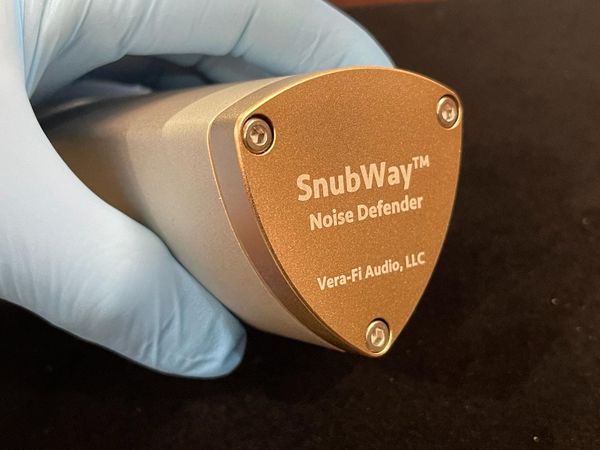
Read the entire review here:https://pt.audio/2025/02/23/vera-fi-main-stream-and-snubway-ac-line-filters-review/
See the great review here: https://pt.audio/2024/10/27/vera-fi-snubway-noise-defender-review/
The sum with:
"And the hardest part is what happens when the SnubWay goes away… I took it out a few days back to do the photography session. I missed it immediately. It’s not like my system suddenly sucked, but more like something suddenly went missing. Once the ears acclimate to a quieter background against which to hear the music, it’s hard to go back to the proverbial stone age."
"The funny thing, looking back, is that I almost denied myself the opportunity to do this review. I considered myself too busy to take the time to listen to a mere “tweak.” I’m now quite thankful that Marc Phillips (with maybe a bit of help from Bill Leebens) twisted my arm enough to convince me to take the time to make it happen. I’m so glad I did!"
See the new Ton Gibbs Positive Feedback review here: https://positive-feedback.com/reviews/hardware-reviews/vera-fi-audio-snubway/
He summed with:
"at its $295 MSRP, it's probably the lowest-priced product you can buy that will provide the greatest improvement to your listening (or viewing!) pleasure. Thanks again to Viet Nguyen for another brilliant and superbly functional design, and thanks to Mark Shifter for the opportunity, and for bringing it to my attention. SnubWay comes very highly recommended!"
SnubWay TM is an advanced parallel mains noise filter utilizing 4 discrete LRC filters tuned to absorb high frequency noise from switch mode power supplies (SMPS) and other sources in the 10kHz to 2MHz frequency range. Today’s homes have power lines that are constantly polluted with dirty pulse switching noises from SMPS that are so ubiquitous in modern homes. From our cell phone chargers to the power supplies for LED lamps and even our laptop computer supplies. They all utilize high speed switching in the 100kHz to 1 MHz range, and they often leak noise back into the house AC mains.
NEW SnubWay Review from KH from the Decware Forums - with permission
Yup, that’s it.
God, how that title eluded me for the past four days is anyone’s guess (those who know my title fetish, are perhaps chuckling at this point).
Ever since watching the R&D video of the SnubWay noise reduction testing a couple months ago, I was convinced Mark had just scaled another audio peak. I decided to go all in and ordered two units for each of my dedicated Hi-Fi Circuits. The price of entry was compelling and allowed the luxury of going big.
I was pleasantly surprised by the packaging—at first I thought Mark had over secured it but then it dawned on me that he probably didn’t want to chance the sensitive snubbers to any rough handling by the carriers prior to reaching their respective final destinations.
And once I held the Snubway in my hands, I couldn’t help but admire Mark’s Production Values! The Snubway is so exquisitely crafted that I would be equally happy to display it as a decorative item. It’s a damn shame having to plug it in at the back of the rack, hidden from plain sight, for it deserves being center stage—to be seen—in addition to being heard.
Since both of my conditioners (Puritan PSM 156 for source gear and PI Audio’s MajikBuss for Sarah) have independent isolated outlets, I didn’t want to curtail the impact of the Snubways and decided to plug them in the available receptacle in each of my duplex Shunyata outlets so it would feed both conditioners (and the gear plugged in to them) equally.
I plugged in both SnubWays in the afternoon as soon as they were delivered and used up a lot of self-control to not have a go at a listening session until 9 hrs later. Mark suggests waiting at least 10 hrs before critically listening so I lost that fight an hour early as I had to go to bed and knew that I wouldn’t be able to sleep peacefully, without a quick drive-by. I listened for an hour not expecting much but was still able to pick out some positive differences. I went to bed, excited for I was certain that after another 24 hrs, I’d be in business.
Now, after spending 5 excellent sessions, I’m ready to share my thoughts.
Volume
There was a mention of a volume boost in the thread, to which I both agreed and disagreed with. I continue to find this subject more complex and fascinating.
Yes, I am detecting more volume at my typical preamp volume dial/setting, so I had to turn it down a little to compensate. But, it’s not because there is any sort of gain provided by the dual Snubways—it’s actually the complete opposite. By strangling the SMPS noise in the line, the Snubways are decreasing the noise-floor to astonishingly inkier blacks. With this reduction in the floor, a couple of interesting things are happening:
While I need less gain to reach my desired 75-85 db level, I was actually taken aback by how satisfying music sounded, 5 to 10 (and in some cases 15) db below my desired level. At the same time, I’m finding the higher frequencies much better controlled even at a higher gain setting on the passive pre. On one track, I was about to turn up the volume because I was conditioned to expect the female vocalist to be a tad shouty, only to realize that the decibel meter was reading at 80 db! In other words, even at a higher gain setting, the Snubways are making the listening experience equally enticing and making sure the higher frequencies are not making out like a bandit.
Speaking of volume—-there is a profound difference in blackness on certain dynamic tracks, when it goes from loud to soft. Not only is it more blacker (which is to be expected given the reduction in noise), but also the speed and control with which its going dark is astonishing. I know this might be hard to comprehend but it’s turning from loud to soft (or vice versa) on a dime. This very noticeable shift in speed is captivating.
The review could just end here folks. I’d be extremely happy with these results, but the positive changes in the noise-floor and how it impacted listening at various volume levels was:
Just the tip of the iceberg…
Soundstage, Space, and Immersion
The stage, nah the canvass, is bigger in all dimensions. There was another mention in this thread about it sounding open and not congested. Similar to the volume boost comment, I agree and disagree at the same time. To my ears and in my rig, the scale of the soundstage has opened up significantly. Think smaller painting vs. a painting 5x its size. That, by definition, will make everything appear less congested. Height, width, and depth are all positively impacted. Notes are noticeably wider, taller (as if I had a large tower speaker), and have decidedly more depth to them (even with the voicing switch on Sarah facing forward).
Closely related to the above is space and or spatial cues. The Phoenix Net (PNET) in my system was already doing a great job of rendering great spatial cues, which transport certain tracks to just another level/dimension. I think the reduction in SMPS noise is allowing the PNET to shine even more. It’s really challenging to describe this phenomenon. You know it when you hear it.
The writing was on the wall during the first listening session. Yello’s track— ‘Rush for Joe’, ends with a jet flying overhead from left to right. I often use this to gauge soundstage and imaging. When dialed-in correctly, you should hear the jet travel right over your head as if you had Dolby Atmos speakers on the ceiling (which I do, but I digress). I was sitting on my couch the first night, not opting to worry about critically listening from the sweet spot, a couple of feet in front. I was expecting to hear the jet fly by in front of me from this particular spot.
Thank God, I wasn’t consuming a beverage at the time since the jet not only flew by right on top of my head (as opposed to a couple of feet in front), but also did with a sense of gusto and realism that left me speechless.
Oh and it didn’t end there. Once it passed on the right, I was expecting the track to stop, but there was an extended decay of ‘let’s just call it a jets after stream’. I had never heard that before.
Jaw dropped, I shut off the system and went to bed determined to explore this new frontier over the next couple of days. The sound just took off from there. Night after night, track after track, I’ve never experienced this level of holography. Here’s what I mentioned to GS:
‘The rig is sounding 2x more holographic than it was ever before—the ease with which the notes are dancing all around me and behind me—-was not expecting that.’
The Snubways appear to have unlocked another level of immersion that I didn’t think possible. I’m still trying to wrap my head around it (no pun intended). It’s akin to being engulfed in a 3D cocoon of sound.
Mark, congrats—you’ve done it again and I have no doubt, that you’ll keep doing it.
End Notes:
Two things I’m not convinced about.
Bass: I am not entirely certain bass has been impacted as much. The Cryotone 300Bs and better isolation feet on my Holo DAC had made a profound impact on the lower octaves. Maybe, the Snubways are just making it a tad more noticeable.
Resolution: I’m also unsure whether resolution has been impacted, though I’ll take Roger’s word for it. He has far more experience and better cabling to discern that particular impact.
Back to top
Innuos Pulse Streaming Transport and Phoenix Net Switch-Holo Audio Spring 3 KTE DAC-Ic0n4 Autoformer Passive Pre-Sarah 300B SET Amp-ZBIT-GIK Room Treatment-Caintuck Audio Magnum Baffles—Li Audio Fast 15 Drivers-P.I. Audio MajikBuss & Puritan PSM 156 Conditioners
BAT-VK-90 preamp
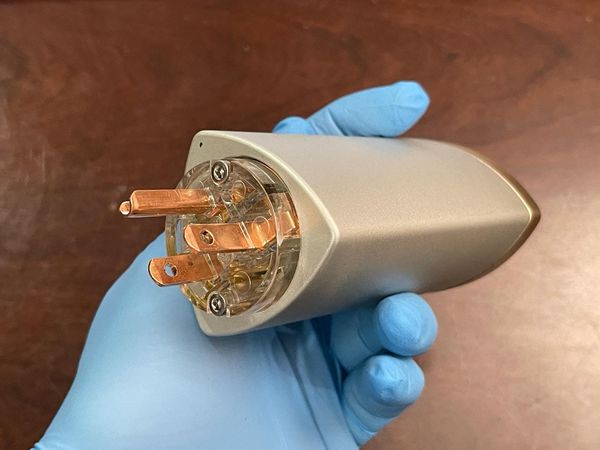
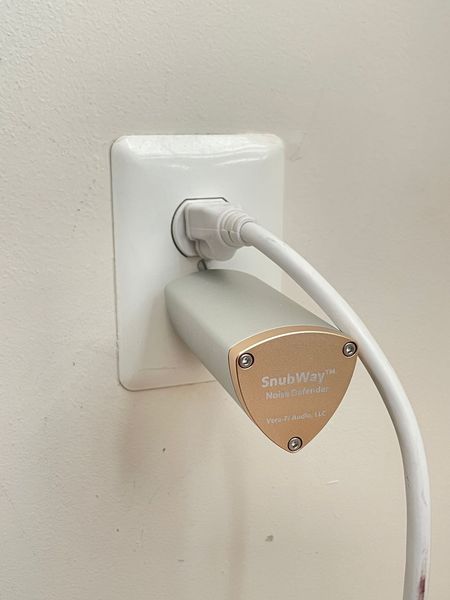
Main Stream
Master Class Dynamic Parallel AC Line Conditioner$295.00
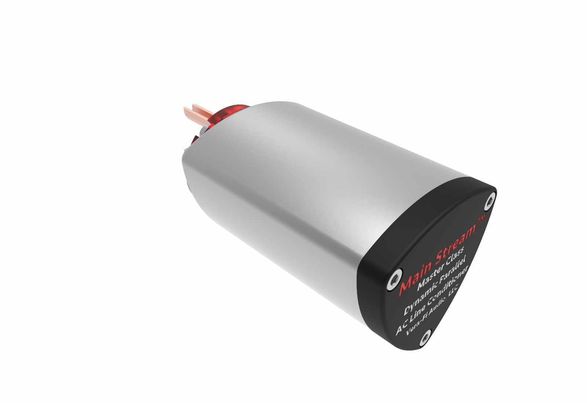
See the great new review in Positive Feedback here:
https://positive-feedback.com/reviews/hardware-reviews/vera-fi-audio-main-stream-parallel-ac-line-conditioner/
They sum with:
"Thanks again to Mark Schifter for making it all possible, and to Peter Madnick and Viet Nguyen for the brilliance of their designs. The combination of Main Stream and SnubWay makes for a dynamic duo, and at this point, the tandem represents my absolute best audio product of the year! Very highly recommended!"
In the followup review they summed with:
"Both Peter Madnick (Main Stream) and Viet Nguyen (SnubWay) are genius level designers, and their brains were obviously telepathically connected during the creation of these amazingly effective devices. Which have gifted my digital system with an impressive reduction of noise, allowing you to hear through more clearly to the music. With the significant reduction of AC-related noise and RF hash, and the accompanying drop in the overall noise floor, this system has never sounded so musically dynamic—or so very good. And every track benefits from more holographic imaging; once again, I'm totally impressed! Main Stream and SnubWay provide the kind of overall improvements you'd expect to pay through the nose for, but you get for essentially pennies on the dollar. Mark Schifter's motto with Vera-Fi Audio's products is "You get insane levels of performance at very sane price points." 'Nuff said!
Read the entire followup here:
https://positive-feedback.com/reviews/hardware-reviews/main-stream-vera-fi-audio/?fbclid=IwY2xjawEaKDFleHRuA2FlbQIxMQABHbkXWdlbVs8zhP-ziI0EVOft7dHIINEBXxLX_UpDj0km_SE2OQFEud8xSg_aem_5O8xMnYjKRGb9NEy0_DN0A
Main Stream is designed to improve the performance of your high-end audio or video system by reducing the amount of AC Mains-based interference travelling on the wires within your home. This interference is created not only by other components in the system, but also appliances and other electrical equipment elsewhere in the house. Sometimes even emanating from outside your home!
Line interference can cause many undesirable effects; hum, hiss, hash, or buzzing sounds from your speakers, a slight vibration that can be felt through the chassis of your components or on the motor of your turntable, and on video displays as random lines, moving bars or fuzzy images.
Main Stream is called a “parallel” line conditioner because you do not plug your component INTO it, but rather plug it into the Mains socket closest to the component. In this way the Main Stream is never restricting the flow of current to your components, simply removing the interference it encounters on the line as the current flows by. And there is no limit to how many Main Streams you can use; a large system may best be served by several.
Main Stream uses a combination of reactive elements to created tuned filters designed to specifically reduce the levels of noise specifically known to interfere with your audio enjoyment. Our topology excludes the use of any type of resonant transformer as a wave shaping device, and rather only removes unwanted frequencies.
• Capable of reducing system background noise to vanishingly low levels
• Reasonably priced
• Milled extruded aluminum case
• Designed for a long life of continuous service
• A faint blue glow shows it is working
• Laboratory tests prove the effectiveness of Main Stream via Fast Fourier Transform graphs
VBH-1 Vibration Black hole
$199.00 for set of 4
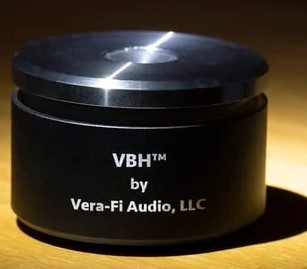
See the new youtube review at: https://www.youtube.com/watch?v=vAk_6PCJTIw
Read the initial Stereotimes review where they sum with:
To quote Mr. Schifter, “Real Deal Science at a humane price,” he’s spot on with that description. Frankly, I didn’t expect quite this level of vibration reduction and isolation from such a cost-effective product. Vera-Fi Audio LLC’s VBH-1 Vibration Reduction Feet is an “easy lift” for even the most frugal audiophile to use under single or multiple components. Color me impressed!
Read the entire review here: https://www.stereotimes.com/post/vbh-1-vibration-reduction-feet-vera-fi-audio-by-greg-voth/
Positive Feedback said:
"Most isolation devices are designed to reduce vibrations to the affected equipment; reducing those vibrations improves your music playback by increasing microdynamics and reducing temporal smear. Prior to about five years ago, I'd never given much thought to vibration effects on audio equipment that simply sits on a rack. With the exception of turntables, which can obviously benefit from some type of vibrational damping. However, I've long since seen the light, and have reached the realization that all equipment can benefit from vibration control, regardless of how insignificant that piece of equipment might outwardly seem."
"The Vibration Black Hole isolators, plainly and simply, accomplish what they're designed to do, period. The careful lengths I'd previously gone to by reducing vibrations to my turntables seems to have vanquished those effects from my LP playback—which even without any vibration protection underneath the Stellar phono preamp was probably "good enough" in my opinion. The arrival of the VBH-1 devices proved to me how very wrong I was—good enough often isn't very good, after all! I've already scoped out the next area for improvement in the analog room: my PrimaLuna tube amplifier simply sits on its Target amp stand. Yeah, it weighs 80 lbs, but those delicate bottles would very likely benefit from some VBH-1-type vibration control!"
Read the entire review here: https://positive-feedback.com/reviews/hardware-reviews/vera-fi-audio-vbh-1/
The Vibration Black Hole (VBH) isolation feet provides mechanical vibration attenuation and isolation using a novel two-stage constrained viscous layer damping (CVLD) technique whereby a compliant and viscous polymeric medium is placed in between two hard surfaces, thereby providing a mechanical impedance mismatch that dissipates the energy from mechanical motions/vibrations through the mechanical shear and compression of the viscous layer. By use of dissimilar materials (nylon/stainless steel/viscous polymer/silicone rubber) in multiple stages, the VBH provides an exceptional level of extra mechanical dampening between two components needing mechanical isolation. The VBH is ideal for mechanically isolating sensitive audio gear such as turntables, tube amplifiers, preamplifiers, and buzzing power supplies in large linear amplifiers. They are also very useful for isolating speakers from hard floors or tables to provide an improved soundstage and bass clarity. Each VBH consists of a precision machined stainless steel body and stainless steel inner core and a machined nylon piston-like conical contact pad. In between each of these components is the unique CVLD dampening compound. The device being isolated mounts on the included machined aluminum spike feet which mate to the nylon conical contact pads to provide the first stage of isolation. This stage is then in contact with the main external base through a second CVLD pad. The second stage of CVLD has an external backup silicone o-ring bumper to prevent bottoming out under heavy load and itself also acts as a CVLD under heavy loads.
Audio Pursuit said:
"At just $199 for a set of four, the VBH-1's provide a tremendous value per dollar compared to other aftermarket solutions. The VBH-1's are a valued and permanent addition to my audio system!"
Read the entire mini review here: https://www.audiopursuit.com/2024/01/vera-fi-audio-vbh-1-isolation-feet.html
Each VBH can support up to 30 lbs so a speaker with four VBH can weigh as much as 120 lbs. The VBH has been tested with an instrumented turntable plinth and special instrumented and calibrated test hammer and has shown a significant reduction in the transmitted mechanical shock and reduction in transmitted mechanical energy.
Snub Station Zero
$595.00
Coming end of October
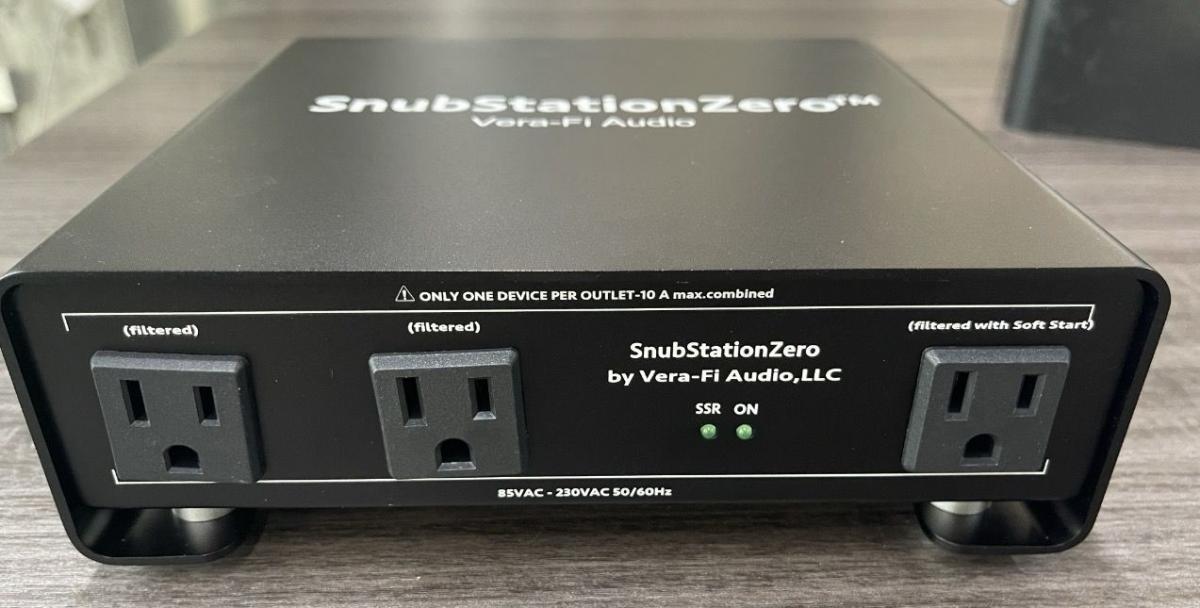
The DC blocker uses four premium EPCOS 22,000uF capacitors with audio-grade discrete TO-220 rectifiers in series. The custom EMI filter uses two large gauge copper wire CMC chokes and premium film capacitors to block unwanted EMI noise. The soft start circuit is unique in that it utilizes a precision Hall-effect current sensor to monitor in real-time, the instantaneous current flow. When a significant change in current is detected, a solid state relay utilizing low on-resistance MOSFETs are employed to serve as non-contact solid state switches (which never wear out or arc, unlike mechanical relays) to bypass a pair of NTC (negative temperature coefficient) variable resistors that serve to slow down the in-rush current. Once the MOSFETs are engaged, the front panel "SSR" LED glows to indicate that the SSZ is providing full current to the system. The main soft start circuit path can be used to filter a single device up to 10A of current. There are two additional NEMA outlet sockets that can provide power for smaller accessories that do not need the soft start feature but will benefit from the DC blocker and premium German-made Schaffner integrated EMI filter module. With three outlets total, the SSZ is ideal for powering a main power amp with the soft start outlet, a preamp and a DAC, etc with the additional non-soft start outlets. The SSZ is designed in the USA and assembled in China using only premium quality components.
Infinity Fuse
$395.00 with standard Sluggo
594.00 with 5x20 Graphene Sluggo/ $694.00 with 6x32 Graphene Sluggo

Don't spend money on overpriced "Audiophile" fuses. They do work but are expensive and have to be replaced when they do their job and blow. Here is a far superior solution. Both cost and performance wise
In the typical hi end system you run your hi current state of the art power cord into the unit and all the current flows thru a crappy thin piece of cable in the fuse. What if you could have no fuse and hard wire? The performance would be far superior but you would lose the protection that the fuse supplies.
To understand the Swiss Digital INFINITY FUSE you need to first understand what the lowly fuses in your audio system does, and does not, do for you.
A fuse is a very simple and elegant safety device. AC Mains current flows through it on its way from your home's wall outlet to the power supply of your audio product. By design, the current flowing through it causes the fuse filament to get warm because it is, in fact, a small value resistor. It uses Ohms Law and the concept of resistance heating (just like your toaster) to protect you. As the current through it increases, the heating of the element increases, until the conducted current exceeds its current rating, when, ultimately, it burns through and opens the circuit. If you examine a typical fuse you will see that lower rated fuses have smaller internal elements than ones of a higher current rating. One can infer from that observation that smaller value fuses have higher resistance than larger, and that is, in fact, the case, as easily shown by a precision Ohm meter. But that's not the whole story, because you are measuring the fuse under "cold" conditions - with no current flowing through it. As current flows and the element heats, its resistance increases, up to the point of failure.
Now, let's examine how your audio product reacts to a fuse's natural characteristics. When you initially power on your product the current draws are high as the capacitors charge up and the active elements begin to conduct. This period is called the "inrush" and the fuse is sized to allow this amount of current to pass; the element will heat up very briefly, but soon return to a steady state or normal operations phase which is typically a much lower current value. In some cases, an equipment manufacturer might specify a “slow blow” fuse, if it knows the inrush current requirement of the product could exceed the brief capacity of a normal “fast blow” type of fuse. Regardless, the principal is the same.
Where the fuse becomes important of course, is from a safety perspective. If there is some fault in the product that causes the current draw to exceed the fuse rating. Under that condition the fuse will continue to heat so long as the excess current draw is maintained, forcing it ultimately to blow, as we described above.
While good as a safety device, the characteristics of a fuse are not optimum for audio performance. First of all, the existing fuse in your piece of equipment is replace by a solid copper rod (named “SLUGGO”) which has negligible resistance and can pass currents you are unlikely to see in any audio product – certainly more than a hundred Amps – before heating (please be sure to read the safety implications of using SLUGGO in your own product.)
The INFINITY FUSE is designed to eliminate all of the drawbacks of a common fuse.
First of all, the existing fuse in your piece of equipment is replace by a solid copper rod (named “SLUGGO”) which has negligible resistance and can pass currents you are unlikely to see in any audio product – certainly more than a hundred Amps – before heating (please be sure to read the safety implications of using SLUGGO in your own product.)
Second, the INFINITY FUSE itself is placed in the power cord between your product and the wall. It measures current flow to your product MAGNETICALLY without introducing any additional source resistance and then feeds this data to the internal microcomputer which determines if that current is “allowed” per the program it is running that emulates your specific fuse value as well as slow blow or fast blow type. If the microcomputer determines the current profile exceeds specifications it will immediately open the ultra-low resistance contacts of the internal high-power relay, disconnecting the load, and eliminate any further current draw.
“Resetting” INFINITY FUSE requires that it be disconnected from the wall for a minimum of 15 seconds. You must also examine your equipment for problems before trying again. INFINITY FUSE blowing again indicates your product has a problem, just as it would using a traditional fuse.
INFINITY FUSE BOX is the realization of what a Fuse should be and all of the safety protocols that go along with this design. We know it works and we know it’s safe IF YOU FOLLOW THE INSTRUCTIONS. Lastly, we hope you’ll try it.
Also available at $475.00 with additional small pigtail power cord.
